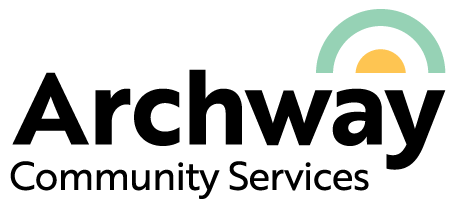
“It felt like having a family where you hadn’t had one before,” shared Darren* a youth who stayed at Archway Autumn House a few years ago.
Since 2010, 141 youth in care like Darren have found a home at Autumn House, a program of the Archway Youth Resource Centre (YRC). Youth live semi-independently in an apartment building with Youth Workers located on-site.
“This program is more than just housing,” said Anthony, a Youth Worker with the program.
Over the span of six to twelve months, youth are provided support in areas such as mental and physical health, building healthy relationships, daily living, personal management skills, navigating substance abuse, and much more.
Independent living skills are taught ranging from grocery shopping and cleaning to helping youth apply for university and file their taxes.
“We’re teaching independent living skills and also supporting everything else that goes on in a young person’s life,” said Mandy, a Youth Worker at Autumn House.
“The situations that lead youth to be living alone are complex,” said Anthony. “In some cases, there are mental health or substance use issues on the parent or youth side which makes living together unsafe.”
“Some of the youth have been in care most of their life and this is a step to transitioning out of care.”
Youth are referred to Autumn House by the Ministry of Children and Family Development (MCFD) or Xyólheméylh (Fraser Valley Aboriginal Children and Family Services Society).
Youth who live at Autumn House have been screened to assess their ability to live semi-independently. They must have the ability to establish and follow through with goals as well as engage with support staff.
The program helps youth grow and build their confidence, which enables them to go out and live their life on their own one day.
The program also helps youth feel cared for, which is an emotion that some are feeling for the first time in their life.
“Every child needs a supportive adult in their life who is also there to hold their hand,” said Mandy.
“We’re teaching independent living skills and also supporting everything else that goes on in a young person’s life.”

Mandy Aujla and Anthony Jansen, Youth Workers
“The situations that lead youth to be living alone are complex. In some cases, there are mental health or substance use issues on the parent or youth side which makes living together unsafe.”
Amanda’s Story
Amanda* moved into Autumn House in 2022, after her mom lost housing.
“I didn’t have anywhere to live, so I got to move in here,” said Amanda, now 18 years old.
Over the past year, she has been grateful for the support and living skills she has been able to learn from Youth Workers like Mandy.
Apart from life skills such as cooking and keeping her apartment clean, she has learned how to build healthy relationships and support herself.
Going to high school and living on your own isn’t easy but one thing is for sure, Amanda can confidently say she would not be in the place she is today without Autumn House.
Challenges
Supporting up to nine youth at a time can be challenging with just two full-time Youth Workers.
“Imagine trying to parent nine youth with complex issues, trauma and needs,” said Mandy.
Anthony and Mandy are available Monday to Friday during regular working hours and there are mentors living on site who support the youth after 5pm on weekdays and on weekends.
The staff mostly work one-to-one with youth, but also plan social activities to give the youth a sense of community.
“It’s a unique way to grow up, so having other youth with similar life experiences living next door allows them to support each other,” said Anthony.
While the work is challenging, Mandy and Anthony are encouraged by the small and big successes the youth experience while living at Autumn House.
“We have had youth come in at the beginning who have a lot of issues and unhealthy relationships, but at the end of the nine months they have grown and learned how to establish boundaries for themselves,” said Mandy.

Inside Autumn House apartments.
“We have had youth come in at the beginning who have a lot of issues and unhealthy relationships, but at the end of the nine months they have grown and learned how to establish boundaries for themselves.”
After Autumn House
After their time at Autumn House, youth move out into housing in the community. Many of the youth are then supported through other YRC services, including Independent Living Support services. One YRC program called Bridges specifically supports young adults over 19 who were formerly in care.
“Our connection doesn’t end the day the youth move out,” said Mandy. “Our goal is to set youth up for success as they approach adulthood and we often connect them to other supports at Archway so they’re not navigating life alone.”
In the past, there was limited support for youth in care after turning 19, which contributed to high rates of homelessness, incarceration and mental health disorders.
Former youth in care now have access to Youth Workers, housing support and free tuition at BC public institutions. MCFD’s Agreement for Young Adults (AYA) also offers significant support to former youth in care.
“Youth used to have to become an adult overnight on their 19th birthday,” said Simone Maassen, Archway Manager of Youth and Health Services. “Nowadays there is a lot more support which gives them a chance to build a strong foundation for their adult life.”
*Client names withheld to protect privacy
“Our connection doesn’t end the day the youth move out. Our goal is to set youth up for success as they approach adulthood and we often connect them to other supports at Archway so they’re not navigating life alone.”
